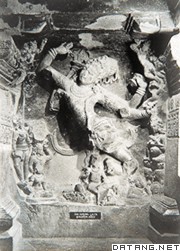2) temple
[英]['templ] [美]['tɛmpḷ]


寺院
1.
The Eunuchs and Buddhist temples in the Northern Wei Dynasty;


北魏宦官与佛教寺院述略
2.
Culture of Buddhist Temple and the Creation of Poetry in the Tang Dynasty;


唐代佛教寺院文化与诗歌创作
3) temples
[英]['templ] [美]['tɛmpḷ]


寺院
1.
In “Qingming Shanghe Tu” (“The Outing at Bian River on Qingming Festival”), Zhang Zeduan depicted plenty of architectures in and out of Dongjing and the outskirt nearby, specifically like temples, official mansions, street stores, etc, which appeared during the reign of Huizong, the emperor of Northern Song Dynasty.
张择端在《清明上河图》中描绘了北宋徽宗宣政前后东京城内、城郊的大量建筑形象,具体有寺院、官宅、临街店肆等。
2.
According to its production and management style,it can be divided into three management modes,that is,ranch,farmland and the land around the temples.
寺院土地是清代蒙古地区土地所有制形态的重要类型,也是清代蒙古寺院经济中的重要生产资料之一。
3.
There were many temples and monks and there were frequent and close relationships between the government and the temples.
西夏以佛教为国教,寺院林立、僧人众多,政府与僧团交往频繁、关系密切。
4) monastery
[英]['mɔnəstri] [美]['mɑnəs'tɛrɪ]


寺院
1.
A Study on the Monastery Laborers-Shabnar during the Qing Dynasty in Mongolia;


清代蒙古寺院劳动者—沙毕纳尔研究
5) Tokyo
[英]['təukiəu] [美]['tokɪo]


东京
1.
Tokyo Modern Urban Planning:From the Period of Meiji to Taisho;


东京近代城市规划:从明治维新到大正民主
2.
Tokyo Regional Planning and Newtown Construction in Reference to Shanghai;


东京新城规划建设对上海的启示
3.
A preliminary study on Japan s local autonomy in urban management and it s references for China——A case study based on Tokyo;
日本城市管理中的地方自治及对中国的启示——以东京为例
6) east of Beijing


京东
1.
There was a pilgrimage circle about Bi-xia Yuan-jun religion in the east of Beijing from the Ming Dynasty to the Republic of China.
由于碧霞元君信仰的兴起,北京东部地区在明代开始形成碧霞元君庙朝拜圈,在清中叶趋于完善,并延续至民国时期。
补充资料:埃洛拉石窟寺院
| 埃洛拉石窟寺院 Ellora,Cave Temples at 印度中世纪的石窟和石凿寺院综合建筑。在奥兰伽巴德城西北约25千米处。分属于佛教、印度教和耆那教。
佛教石窟开凿于7~8世纪,主要是僧房窟。这些石窟不仅重视实用性,而且重视装饰性,修建得富丽堂皇。浮雕题材多样化,有观音和弥勒菩萨雕像,还有多罗菩萨、金刚萨埵等早期密教图像。这里的石雕像躯体粗壮,公式化,已受到印度教造像的影响。7~9世纪开凿的印度教石窟占有重要地位。埃洛拉的盖拉萨山在印度教神话中被视为湿婆神居住的神山,16窟的盖拉萨那陀寺是在山崖巨石上雕成的,包括门厅、前殿、主殿、寺塔等各种建筑结构,整个寺院布满华丽的浮雕和壁画,显示了这一时期印度教的兴盛,在世界古代建筑中独具一格。开凿于8~10世纪的耆那教石窟,规模较小。 |
说明:补充资料仅用于学习参考,请勿用于其它任何用途。
参考词条
